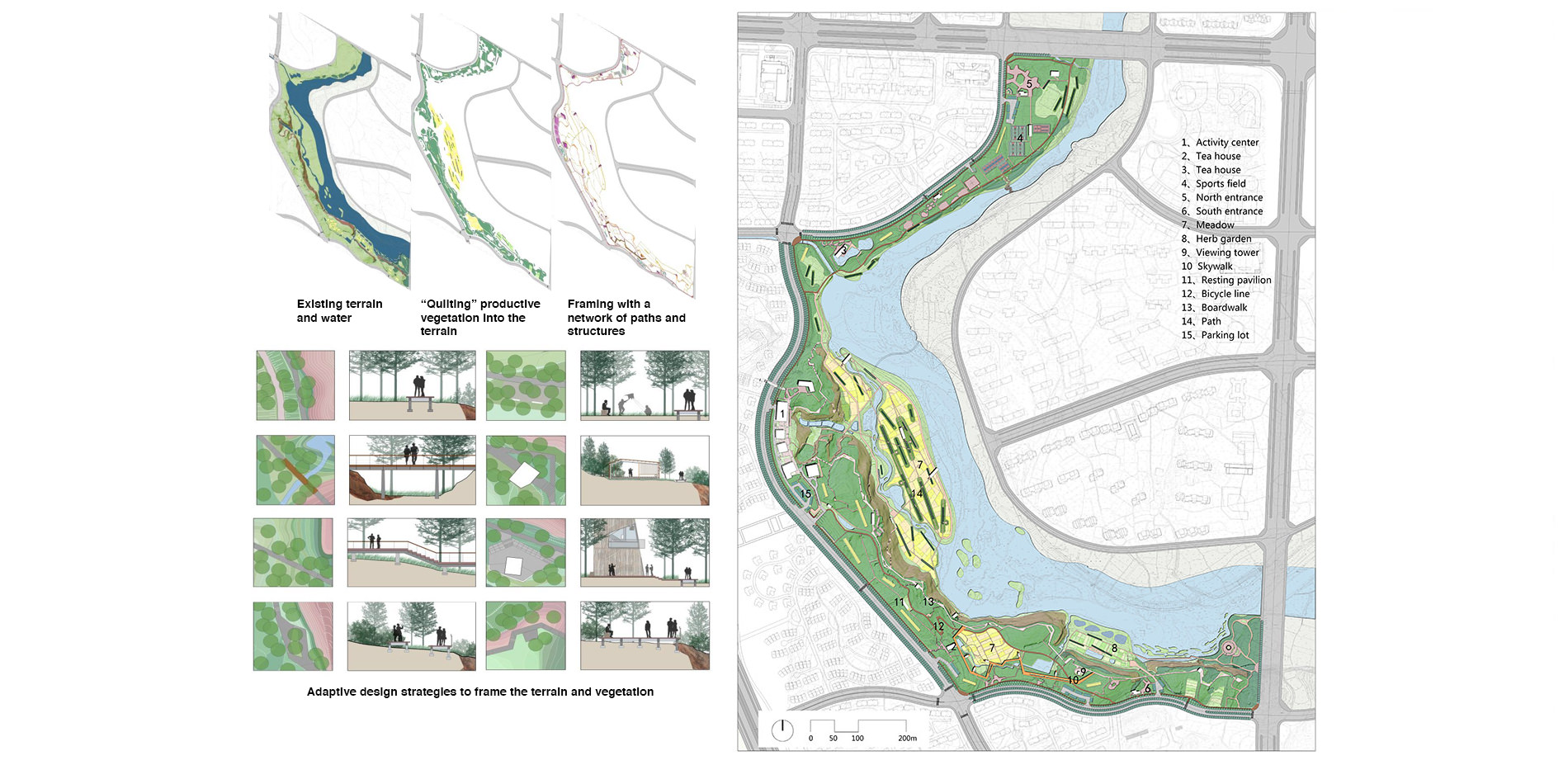
Site plan of the Quzhou Luming Park: “Quilting” productive vegetation into the terrain, and framing the terrain and water with a network of paths and structures
Photo Credit: Turenscape
Media: Please submit high-resolution image requests to images@asla.org.
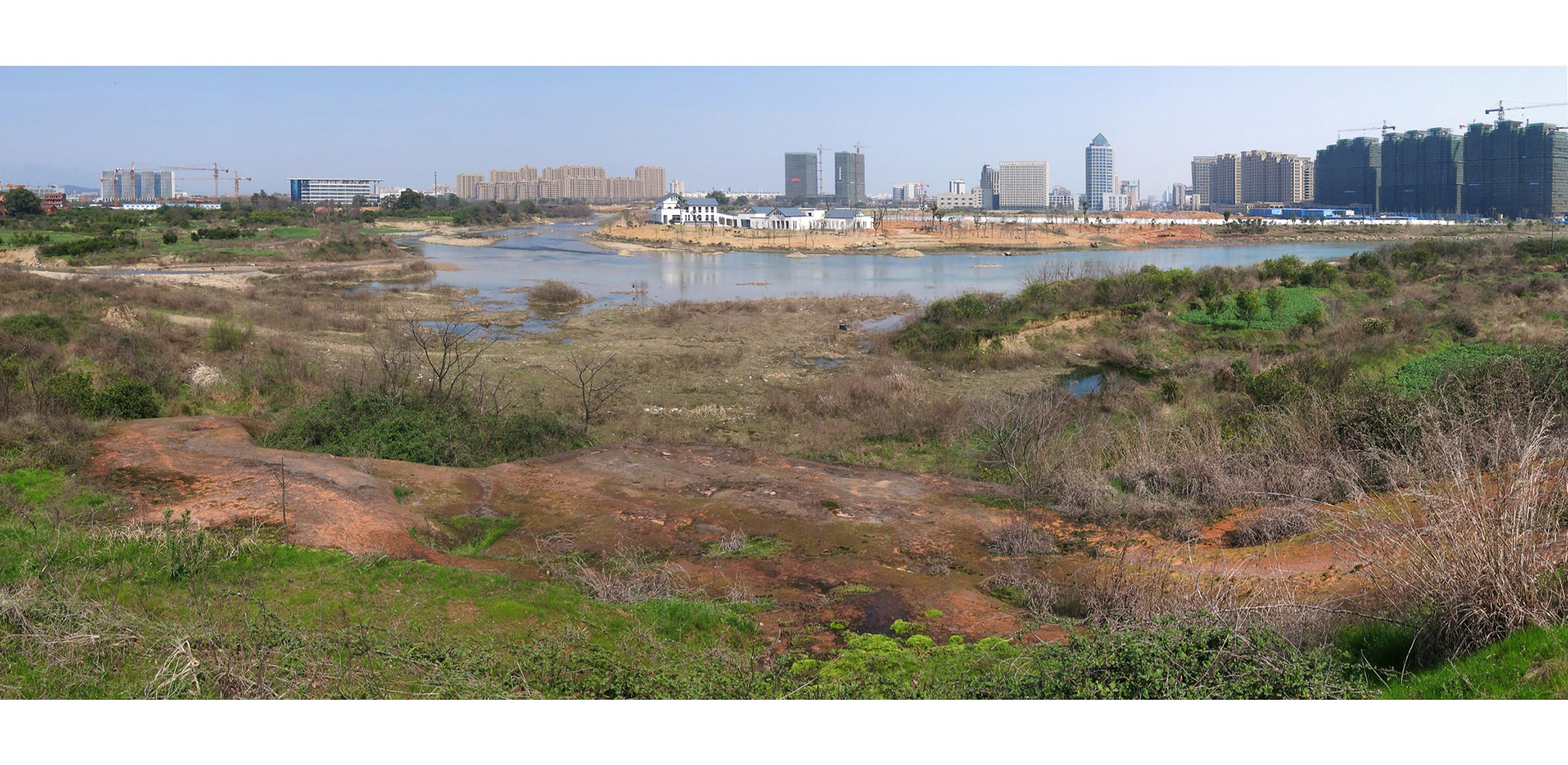
Pre-existing landscape: a remnant landscape patchwork which consists of rolling hills with red interspersed sandstone outcroppings, vegetated areas of bushes and grass, swathes of farm land, a flood plain of abandoned farmland, and a linear grove of trees along the river
Photo Credit: Turenscape
Media: Please submit high-resolution image requests to images@asla.org.
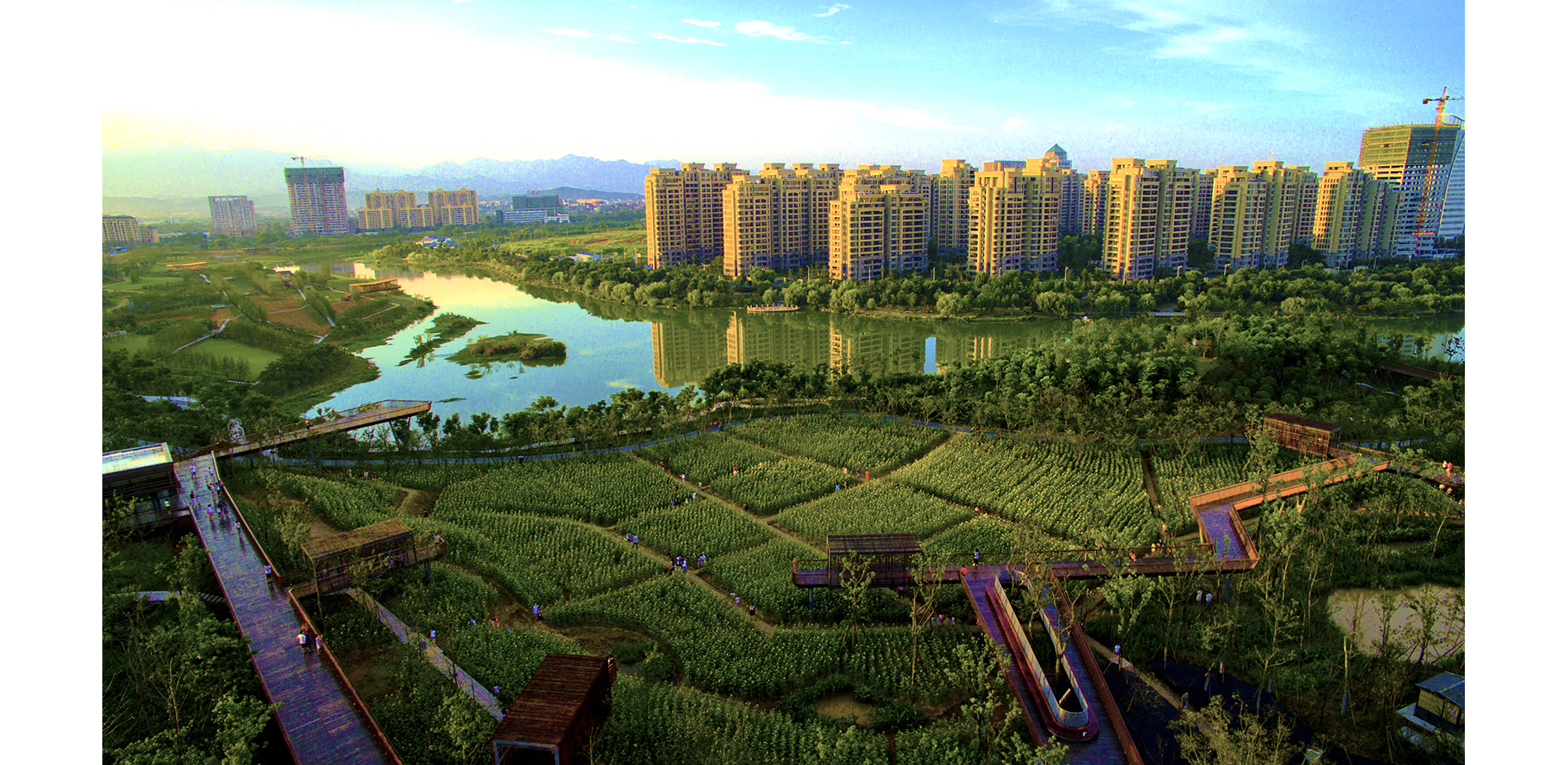
An aerial view of the urban farm which was transformed from abandoned fields–here, covered with a crop of sunflowers.
Photo Credit: Turenscape
Media: Please submit high-resolution image requests to images@asla.org.
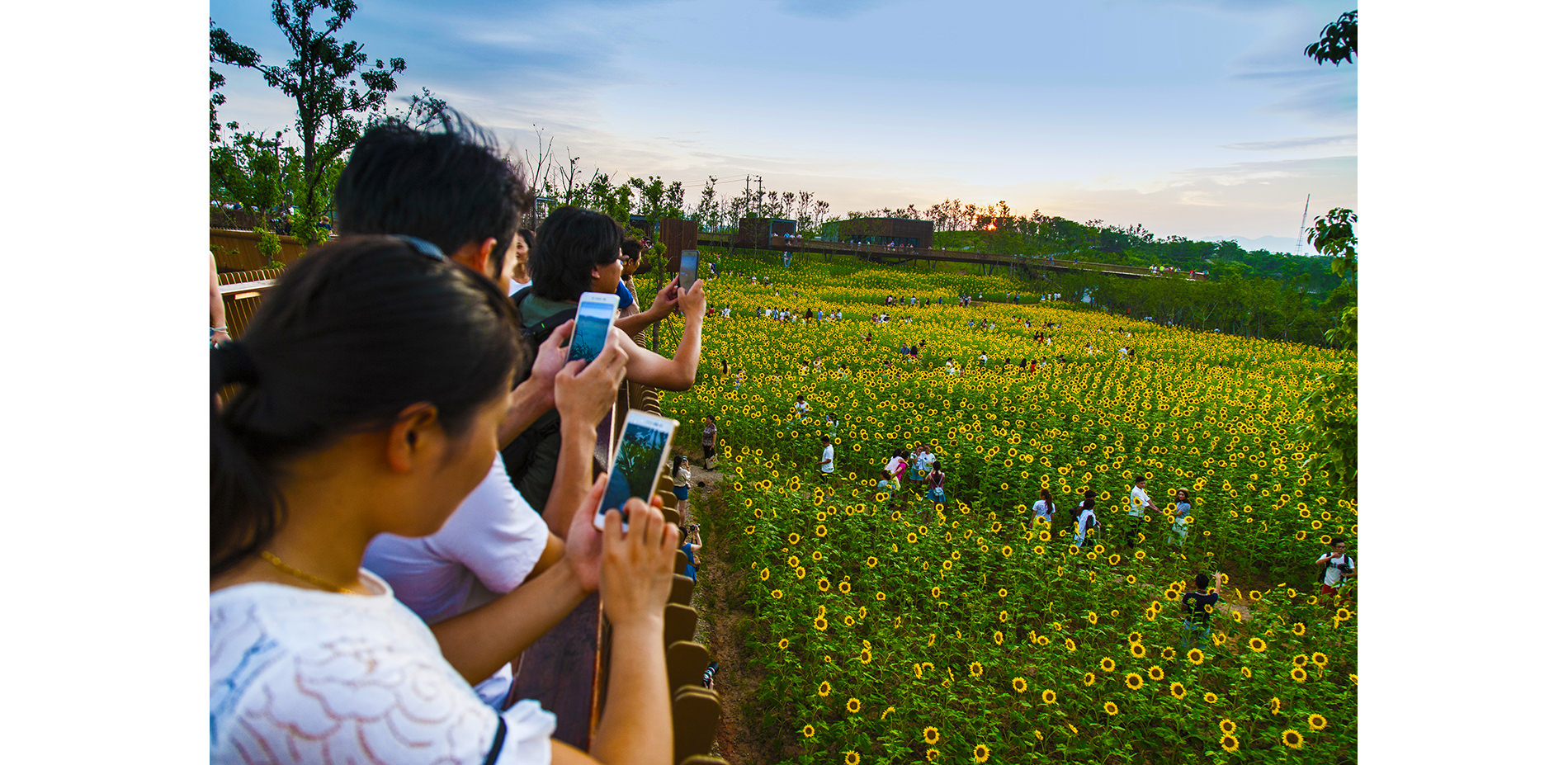
A productive sunflower field attracts twenty thousand visitors every day in August when the flowers are in bloom.
Photo Credit: Turenscape
Media: Please submit high-resolution image requests to images@asla.org.
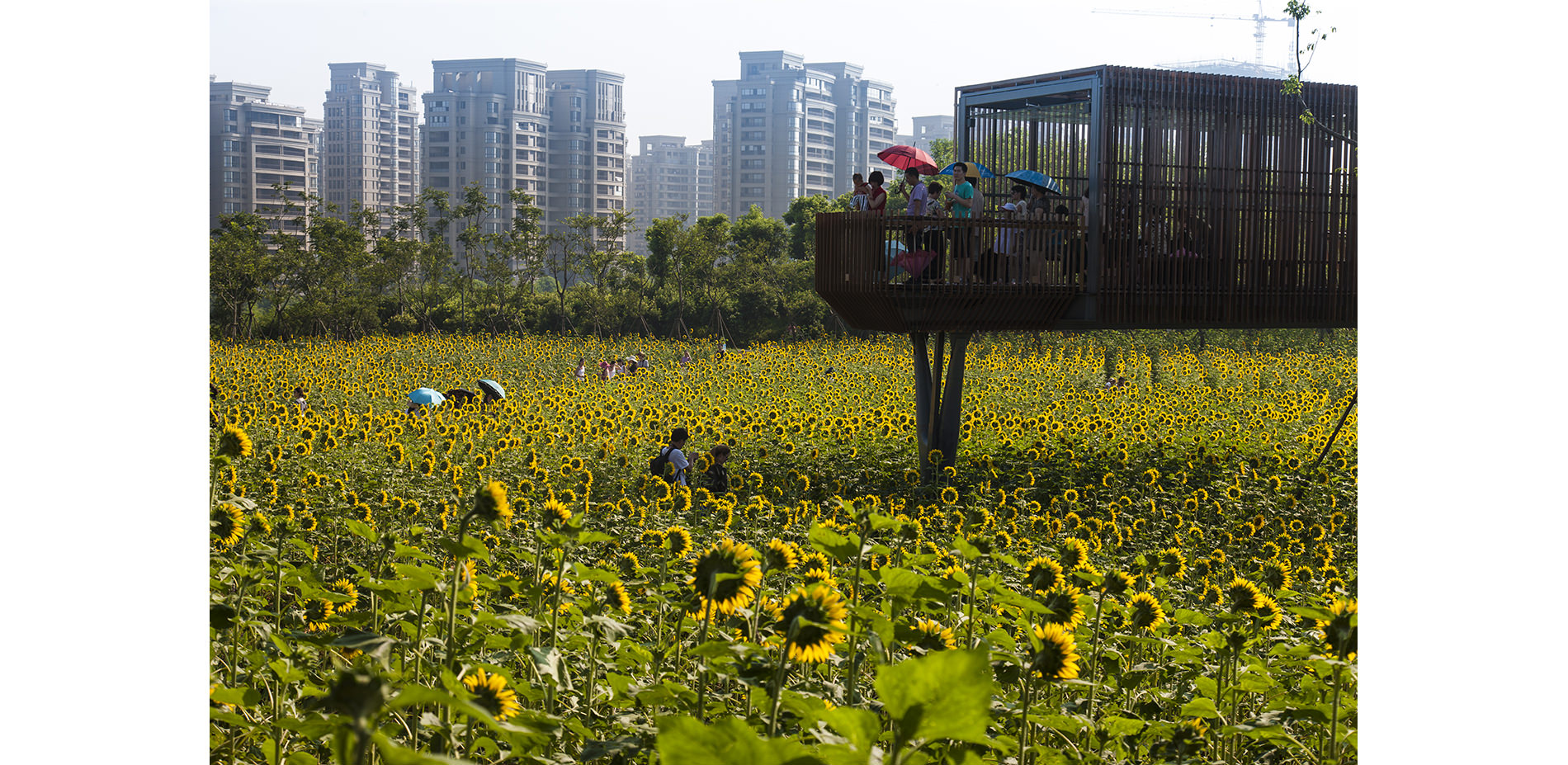
To see and be seen: a pavilion overlooks the farm covered with sunflowers during the summer
Photo Credit: Turenscape
Media: Please submit high-resolution image requests to images@asla.org.
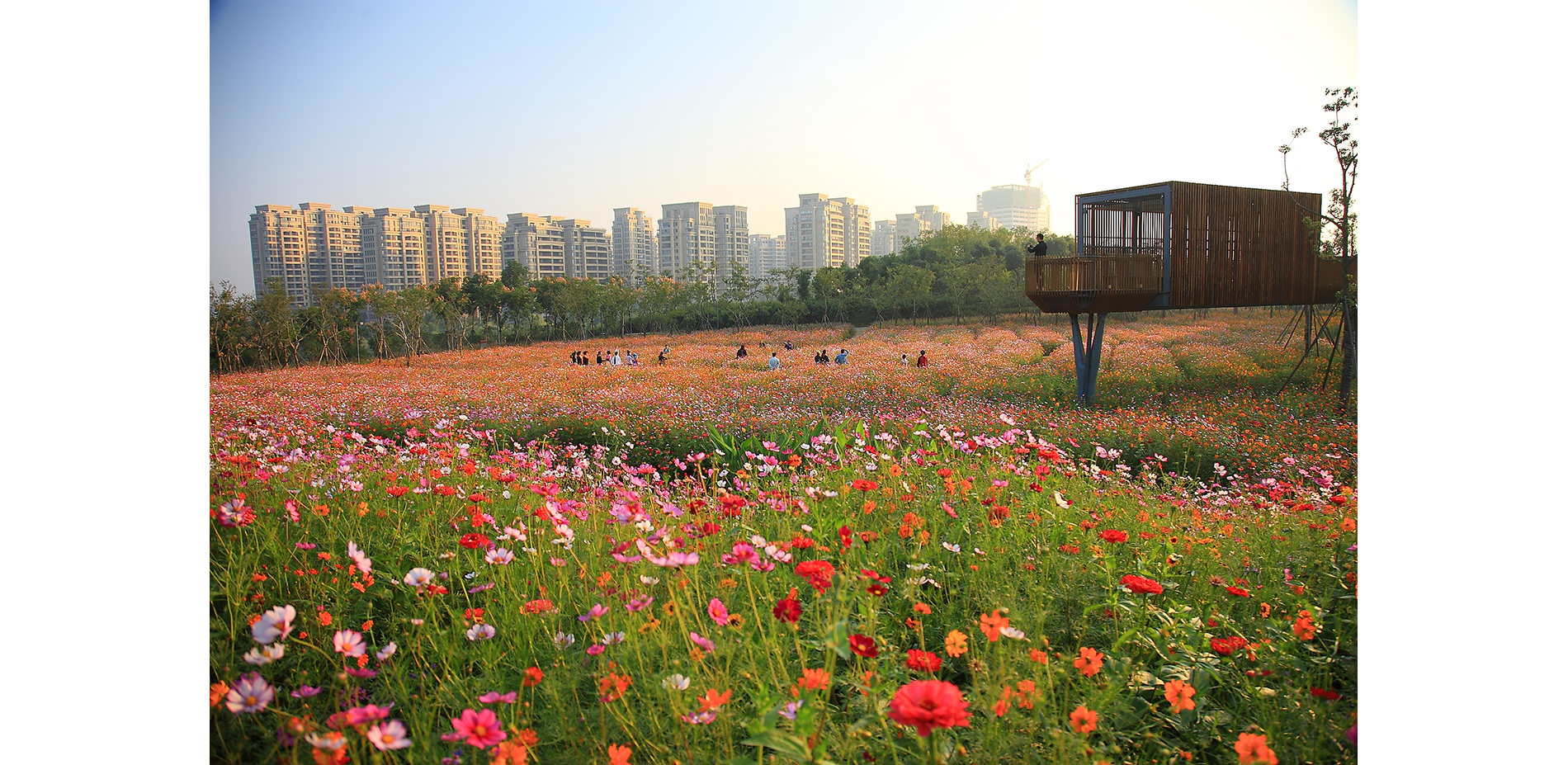
To see and be seen: a pavilion overlooking the meadow planted with of mixture annual flowers during the fall. The flowers are grown in seasonal rotation with the sunflower crop.
Photo Credit: Turenscape
Media: Please submit high-resolution image requests to images@asla.org.
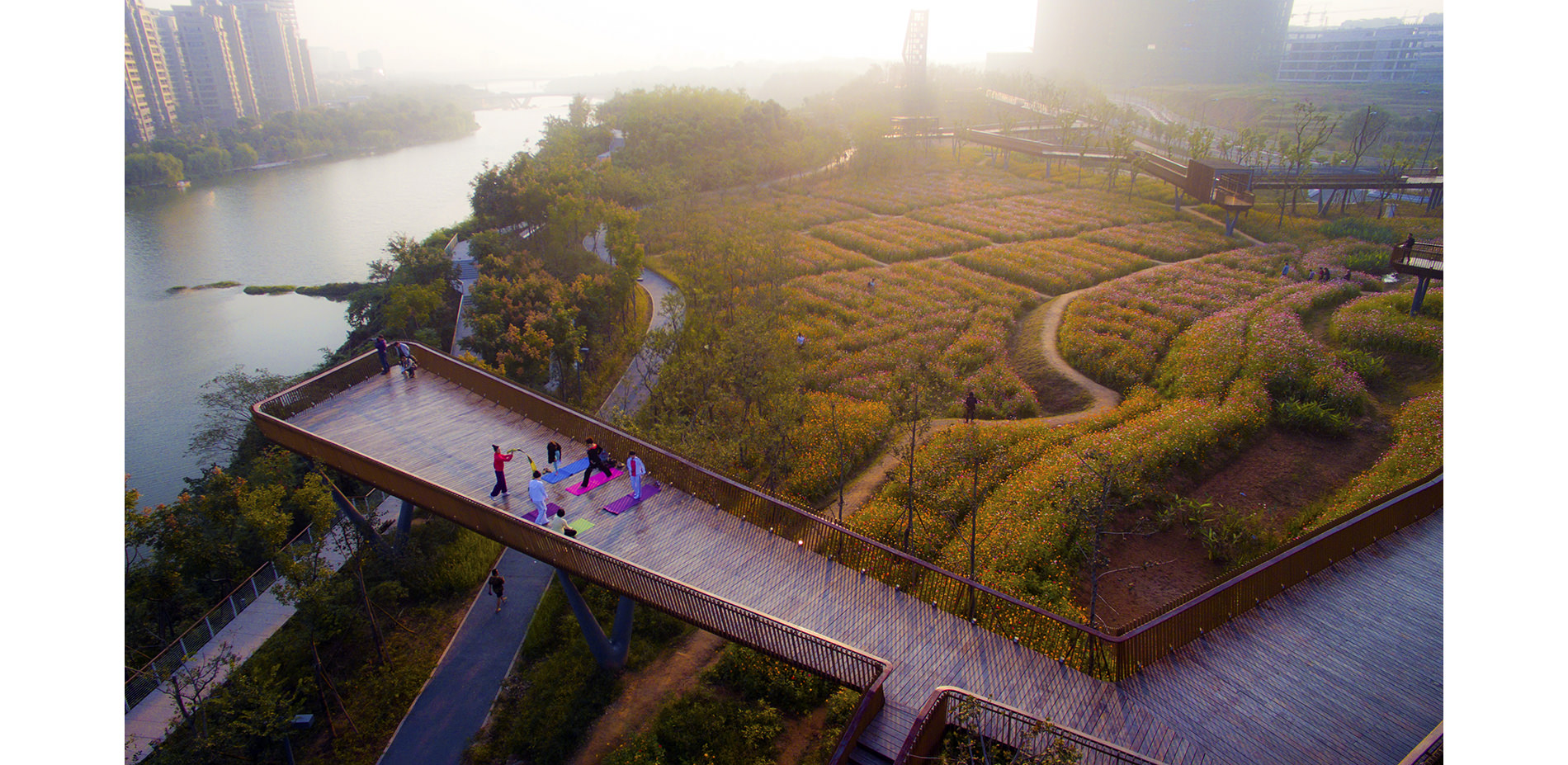
A transformed landscape: an aerial view in the early morning with the skywalk above a meadow cloaked in a mixture annual flowers.
Photo Credit: Turenscape
Media: Please submit high-resolution image requests to images@asla.org.
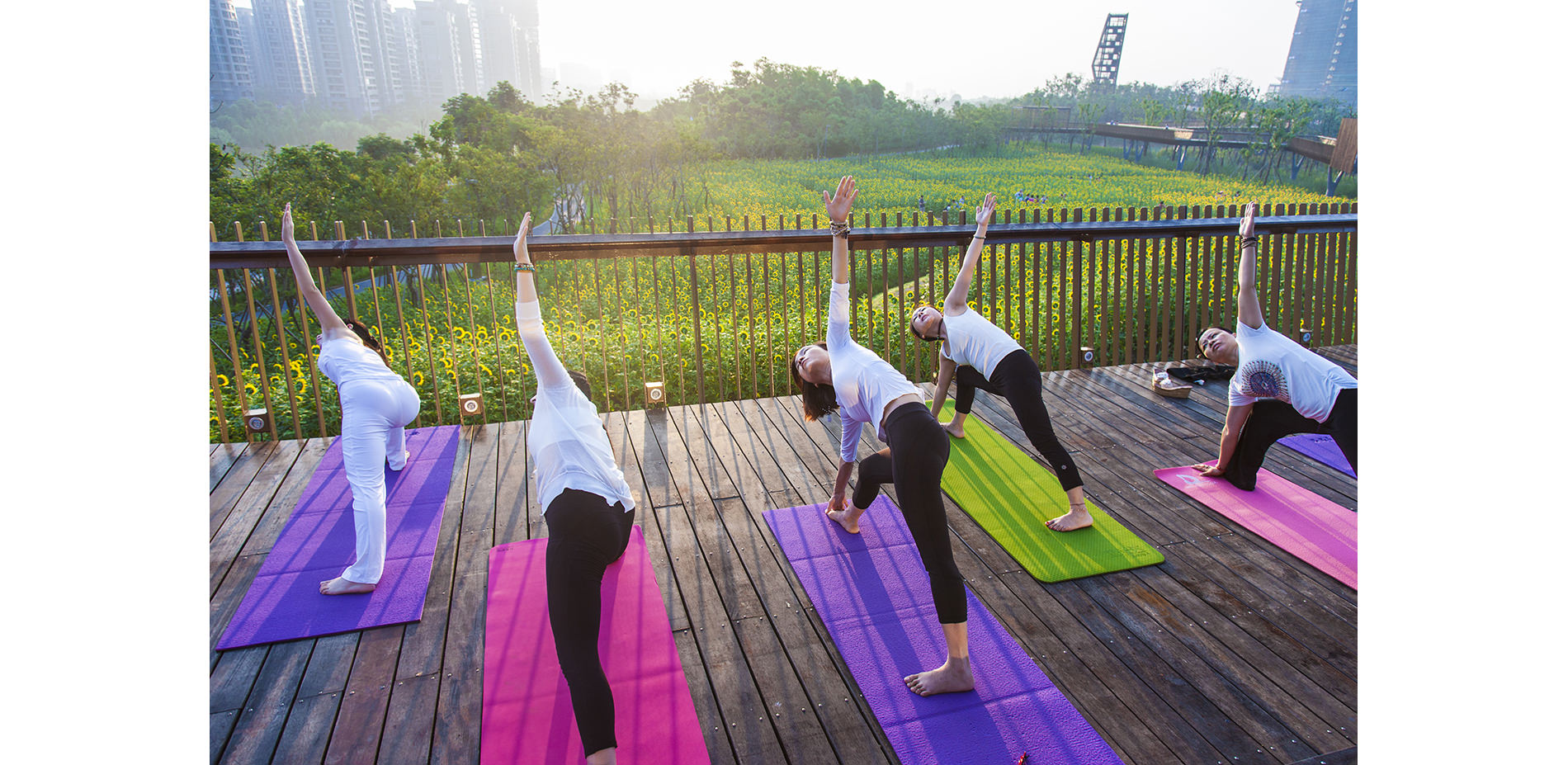
A group of women practicing Yoga on the elevated platform overlooking the urban farm, there are three Yoga teams practicing daily in this park
Photo Credit: Turenscape
Media: Please submit high-resolution image requests to images@asla.org.
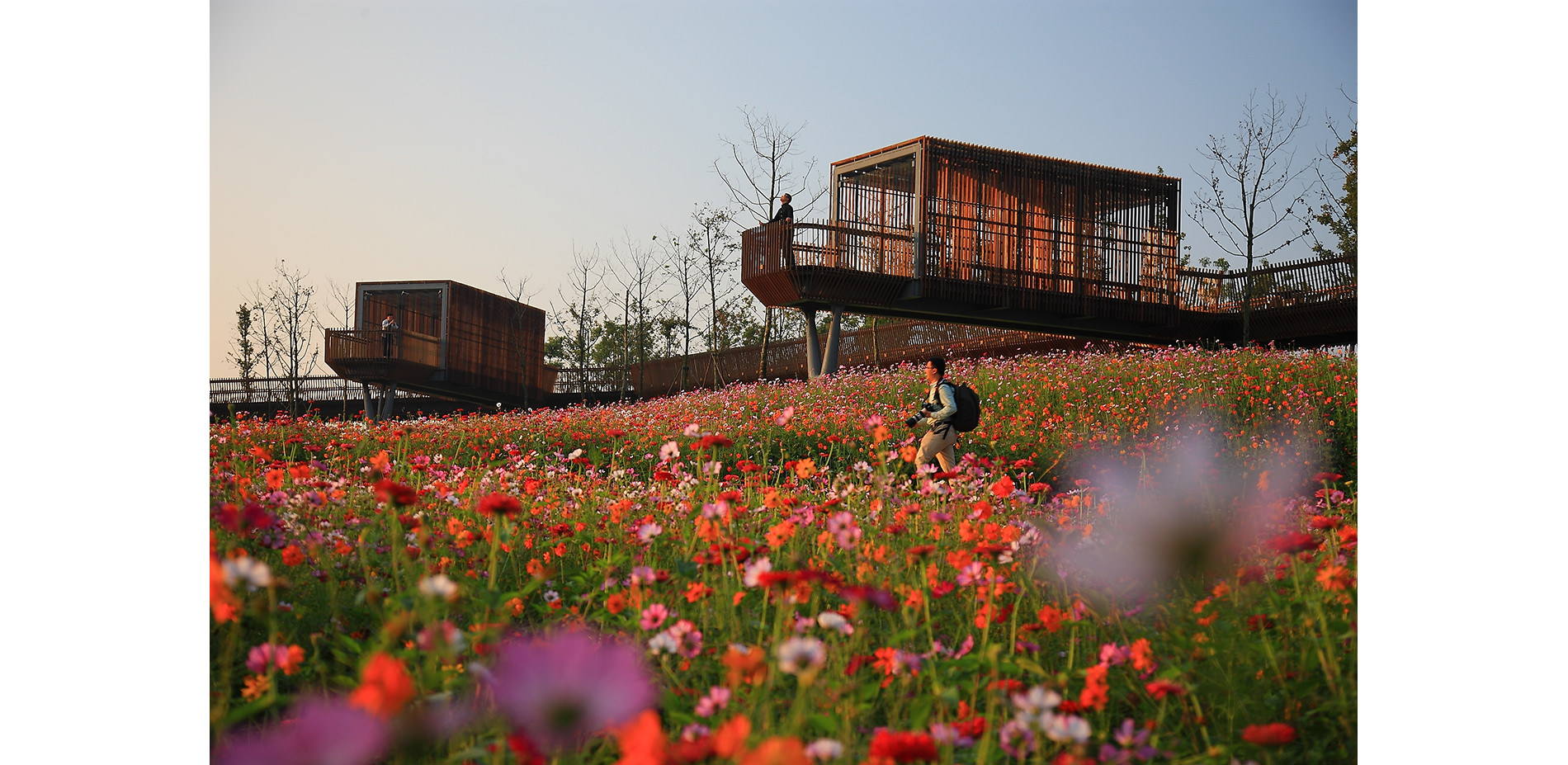
A meadow with a mixture of annual flowers that are grown in rotation with the sunflower crop. Above the meadow are pavilions and skywalks that allow visitors to experience the park.
Photo Credit: Turenscape
Media: Please submit high-resolution image requests to images@asla.org.
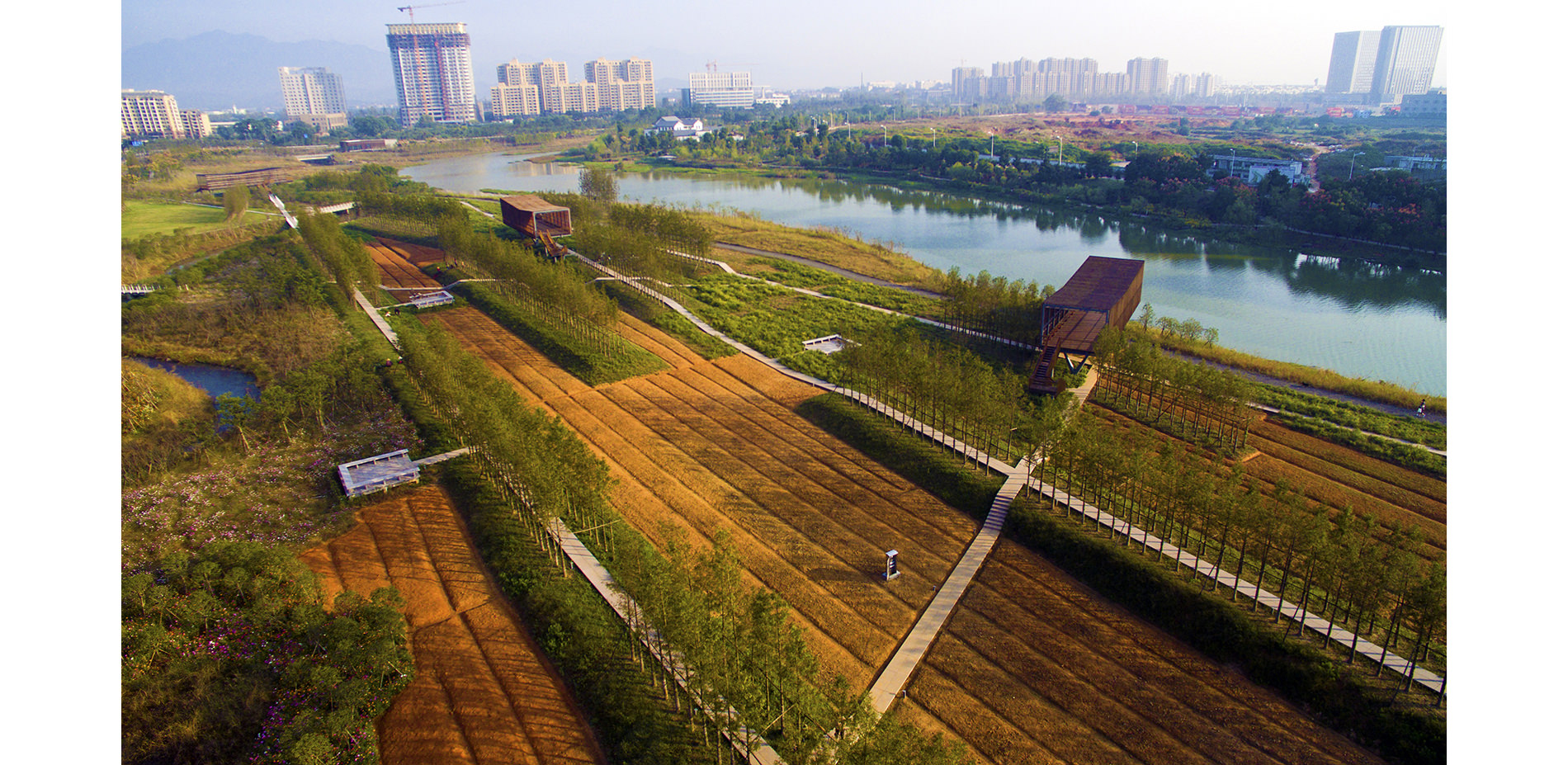
The reclaimed farmland on the flood plain with flood-resistant pavilions and paths. Dawn redwood trees line the elevated paths, which are oriented north-south so that pedestrians are shaded while the crops are in full sun.
Photo Credit: Turenscape
Media: Please submit high-resolution image requests to images@asla.org.
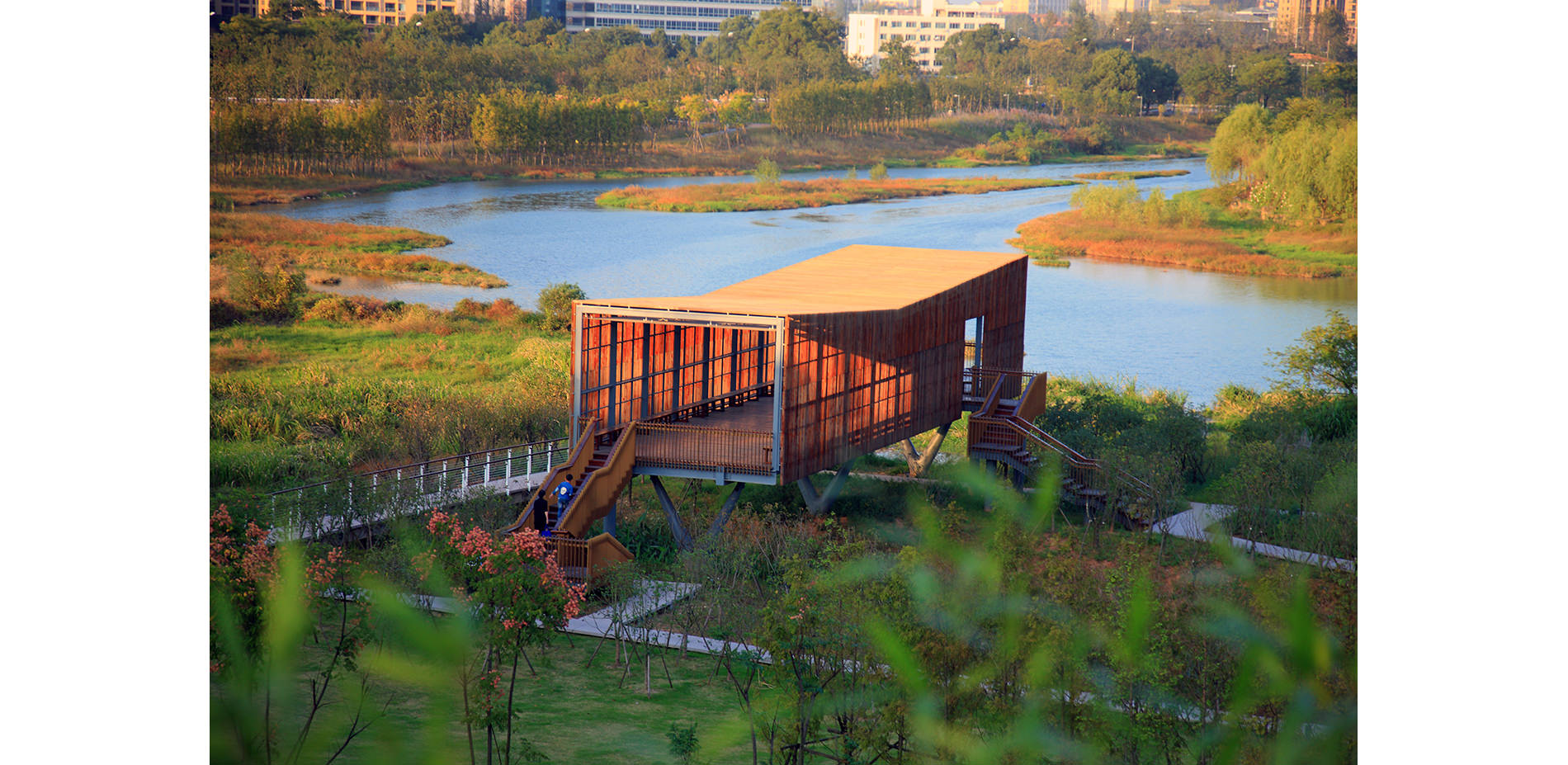
Pavilions are positioned to provide shade and places to rest in the summer. This pavilion sits strategically above the flood plain and at the water front with a view of sunsets over the creek.
Photo Credit: Turenscape
Media: Please submit high-resolution image requests to images@asla.org.
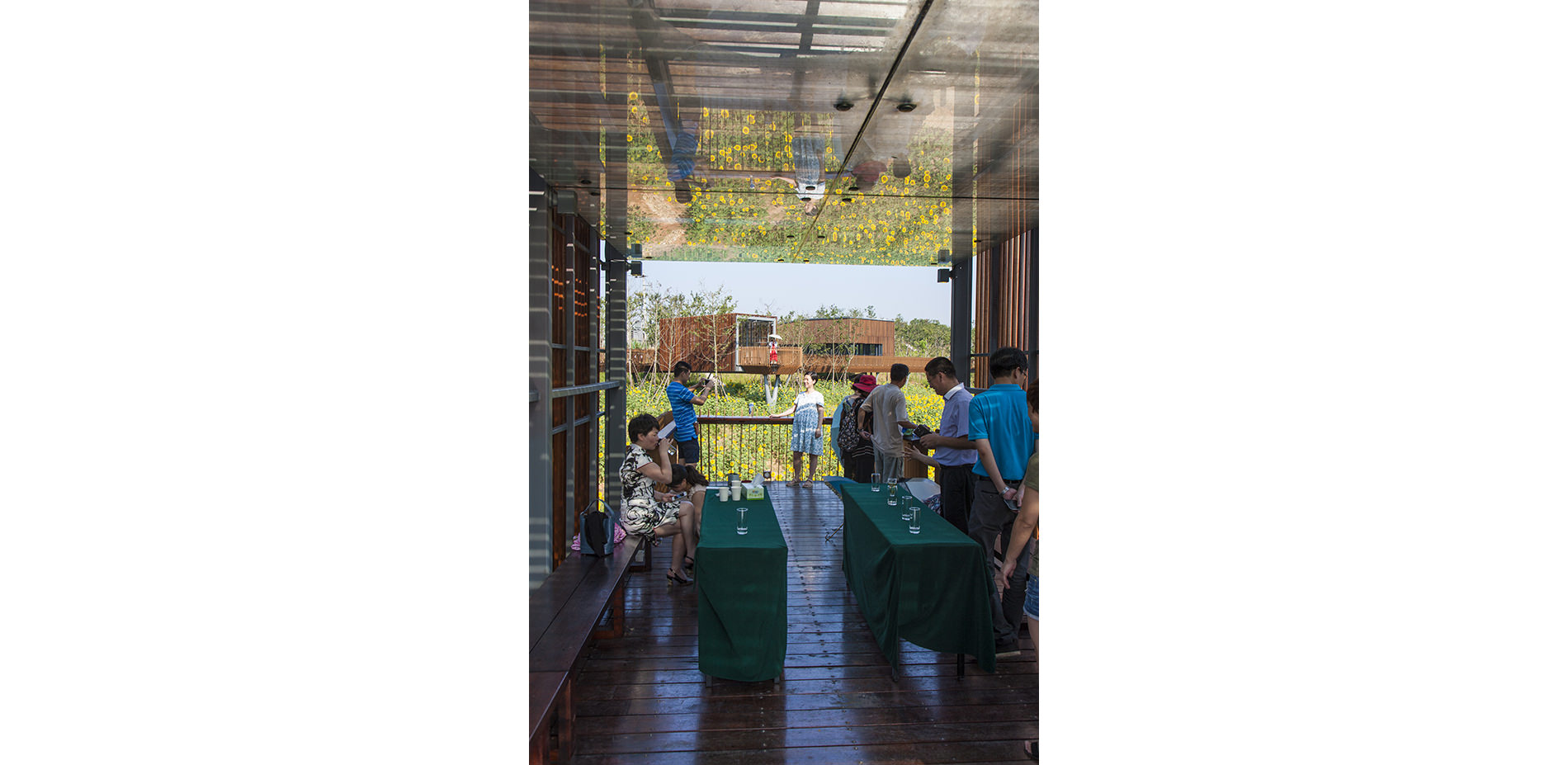
Community members socialize in one of the ten pavilions that provide shelter for visitors and spaces for community gathering.
Photo Credit: Turenscape
Media: Please submit high-resolution image requests to images@asla.org.
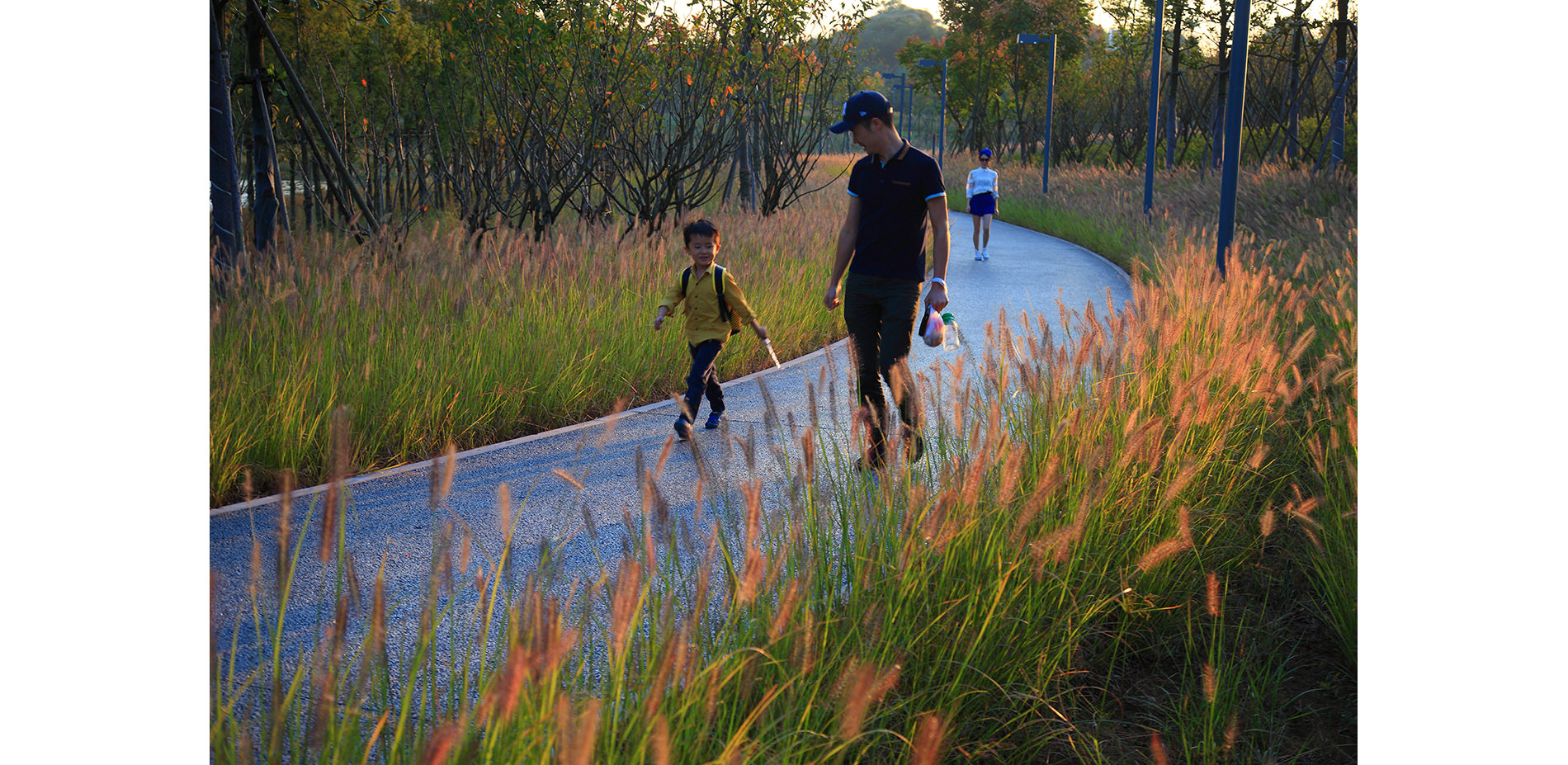
The pedestrian path in the greenway along the Shiliangxi River provides a pleasant outdoor jogging route for local families.
Photo Credit: Turenscape
Media: Please submit high-resolution image requests to images@asla.org.
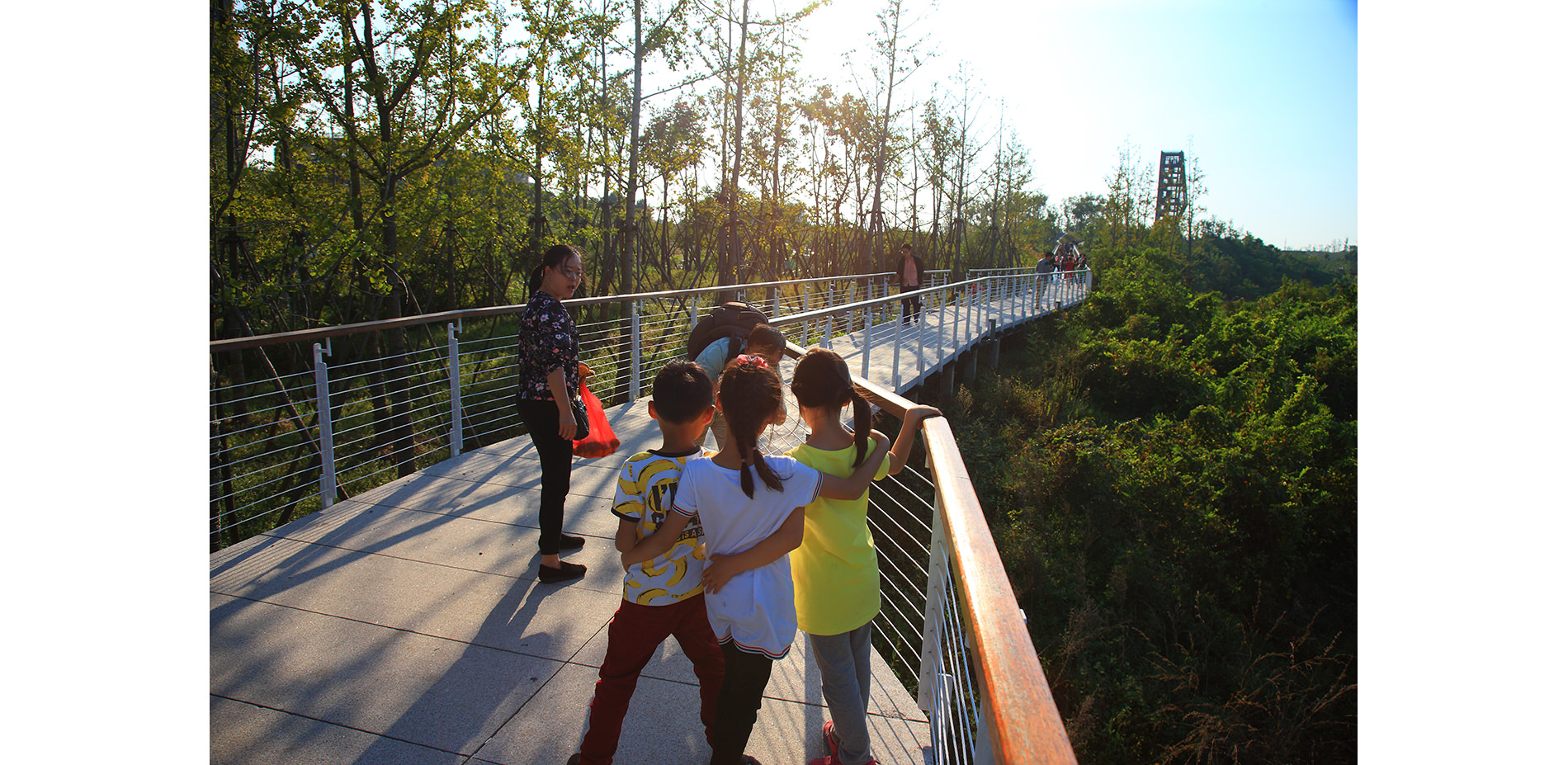
The path network on the rocky hill is designed to be detached from and frame the pre-existing terrain and vegetation. This feature allows visitors to appreciate the undisturbed natural landscape.
Photo Credit: Turenscape
Media: Please submit high-resolution image requests to images@asla.org.
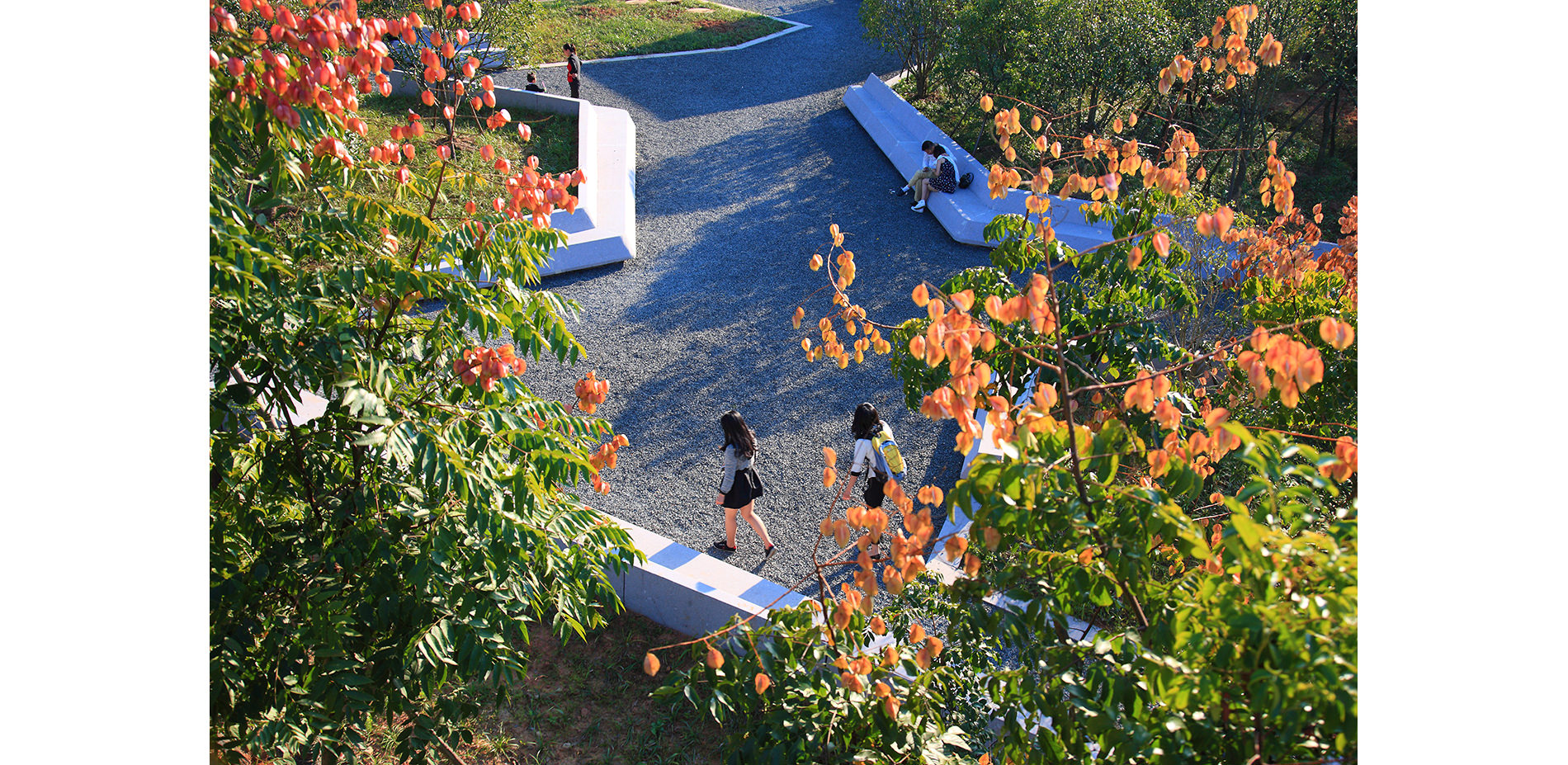
As an adaptation to the humid and hot climate, the plazas and entrances to the park are all designed with permeable pavement and provide shade and resting places for visitors.
Photo Credit: Turenscape
Media: Please submit high-resolution image requests to images@asla.org.


















